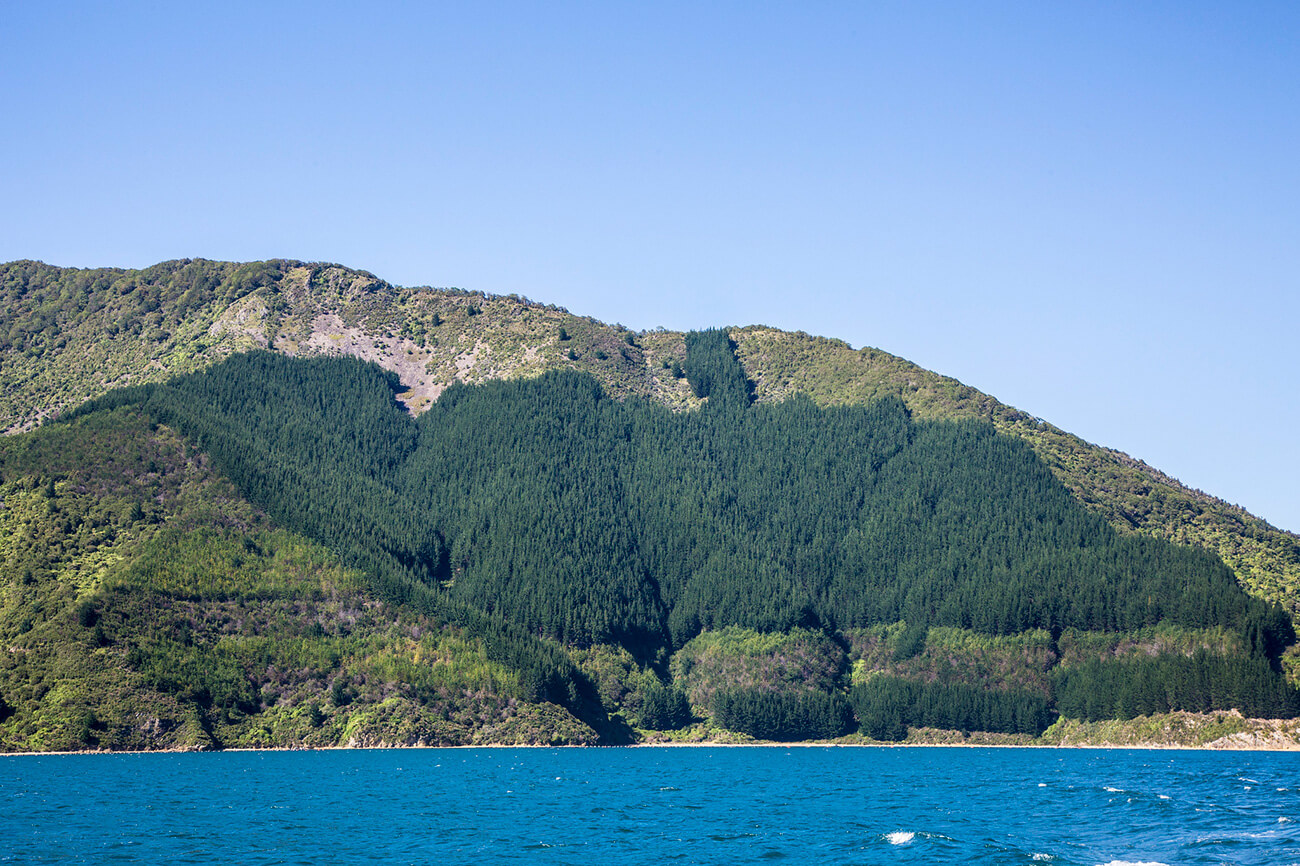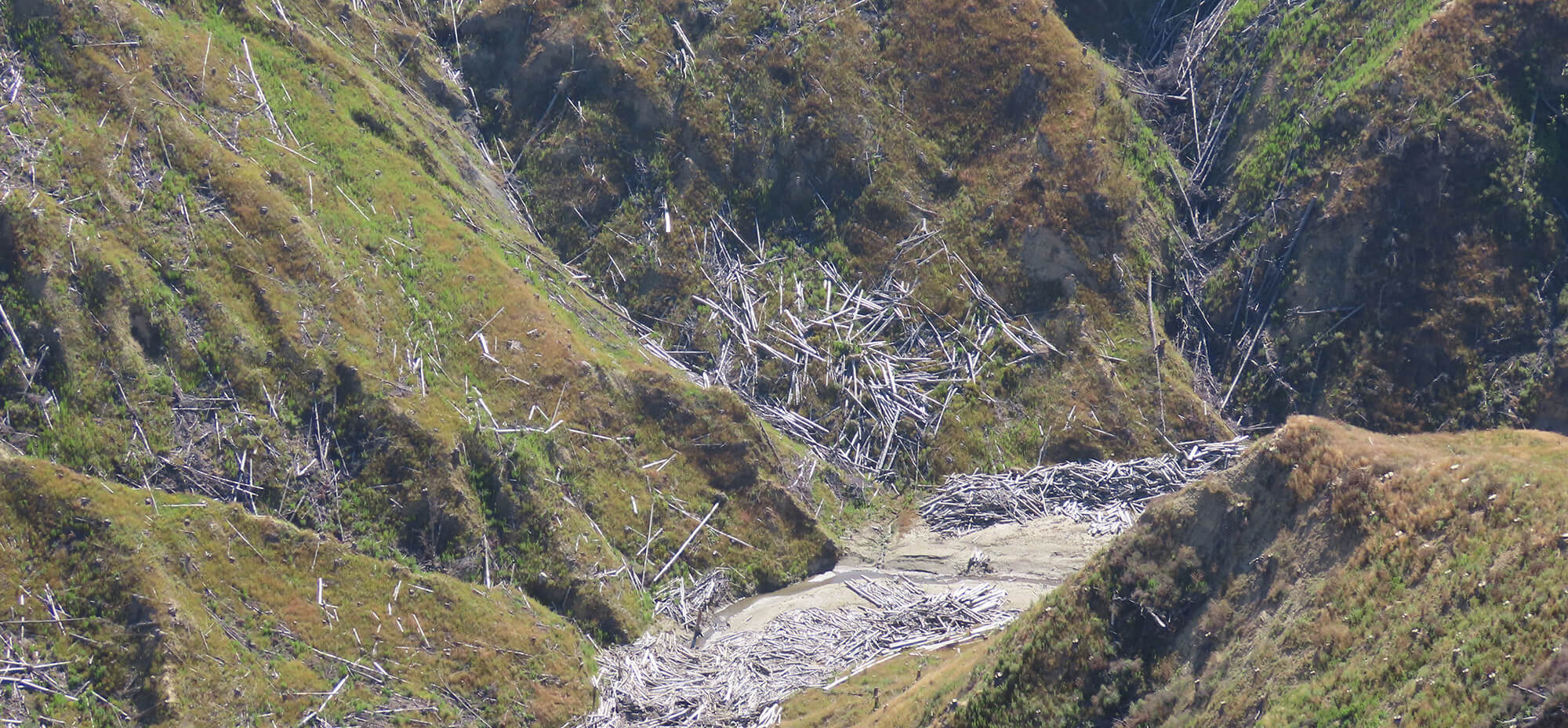There is a new risk to you – the taxpayer – from the government’s recent decision to back off from excluding exotic species like pine from the permanent forest category of the emissions trading scheme.
Pine, Pinus radiata. We use it for everything from housing construction to farm posts, furniture, decks, paper and cardboard.
Fast growing and hardy, it’s a very useful resource – from flood plain and erosion protection to a successful, albeit low value add, log export industry. Exotic pine plantations have meant for the last 60-70 years our native forests have been protected from pressure to harvest.
Pine, like all trees, are useful in combating climate change by taking CO2 out of the atmosphere as they grow. What’s not to like?
Well Pinus radiata is an introduced species, unlike native forests with diversity and climate resilience. With increasing impacts from climate change, pine plantations present heightened risks.
They burn well, creating risks for neighbours and releasing CO2 back into the atmosphere. The recent wildfires in the Landes forest, the largest planted forest in western Europe, saw thousands of hectares burnt and thousands of people evacuated.
These are monocultures, at a time when a biodiversity crisis and collapsing ecosystems are posing risks to human survival. In many parts of the world, the impact of climate change, pests and diseases are wiping out huge areas of monoculture plantations.
Pinus radiata is also a relatively short-lived species. Compared with native forests, pine plantations sequester carbon for a relatively brief period. As the trees age and die, the risks of fire and disease increase, along with the risks that the plantations will be abandoned.
From 1 January 2023 forest owners can lock up pine plantations, as ‘permanent forests’. In return, while the trees are growing, owners will be able to earn credits which they can sell to polluting industries to offset emissions. When the trees stop growing those revenue streams finish.
This means pine plantations will increasingly be planted with no intent to harvest. A new exotic carbon farming industry will rapidly spread across the land– an industry we can think of as carbon mining.
Just like its traditional format, carbon mining is an extractive industry. Once there is no resource left – in this case, when the pine trees stop growing – the mine is of no value and becomes a liability.
In addition to the long term costs of managing a plantation in its ‘permanent’ state, any deforestation requires the owners to buy emission units. There is a very real risk of a ticking time bomb with the price of emissions units increasing significantly over time.

– Photo Credit Raewyn Peart
But what if plantation/landowners have no cash 30 years down the line? With the revenue exploited they are left with obligations into perpetuity. Good intentions will surely weaken over time, with the potential for owners to walk away as the plantations reach the end of their natural life cycles.
Listen to Jamie Mackay interview Rob Morrison on The Country below:
There is always recourse to the courts, but we’ve seen what happens when mines are abandoned when owners go bankrupt. In 2013 tax and ratepayers picked up a $22m bill to remediate Tui mine in the Waikato.
Promises may be made that instead, pine plantations will be converted to native forests. This is a very difficult and high risk process, however. Take for example Maungataniwha pine plantation.
It can take at least a decade to clear logged land of wilding pines and to get it to the point where it can be described as fully regenerated – supposing you are lucky enough to have native seeds in the soil already. It’s costing the Forest Lifeforce Restoration Trust around $70,000 per year, plus a lot of volunteer hours.
If land owners are not inclined or able to meet their obligations, these sorts of projects will be extremely challenging. Government and communities will pick up the costs of remediation.
Millions more would be needed to pay for the purchase of emission units to offset the felled pine, and it is hard to see where this money would come from.
As designed, the ETS is encouraging the misallocation of capital towards carbon mining, with the potential for damaging long term socio-economic and biodiversity outcomes.
Ultimately, taxpayers and society will be left with the bill. The environment will suffer, biodiversity will be negatively impacted, resilience to climate change will be reduced and you, me, our children will be picking up the bill.
It is not too late to chart a different path. Initiatives such as native nurseries and recognising carbon sequestration in native forests are important, yet not enough to put native forests on a competitive footing with pine plantations to remove carbon.
We need new thinking. The value of using native forests to sequester carbon (with their long-term climate resilience, biodiversity and other benefits) should be reflected by the offer of premium grade units in the ETS.
Premium units based on native afforestation will be sought after, driven by the demands of consumers and industry conscious of brand value, and alert to the risks associated with carbon mining.
Pure Advantage has engaged widely with experts who back our views, which are at odds with those of the government and vested interest groups fighting to keep Pinus Radiata in the permanent category of the ETS.
The experts will be presenting more science and evidence for more native forests for all their benefits at the O Tātou Ngahere conference this October 27 & 28 at Te Papa in Wellington. We, New Zealanders, must convince our government to take the right actions here, for ourselves and our children.




Leave a comment